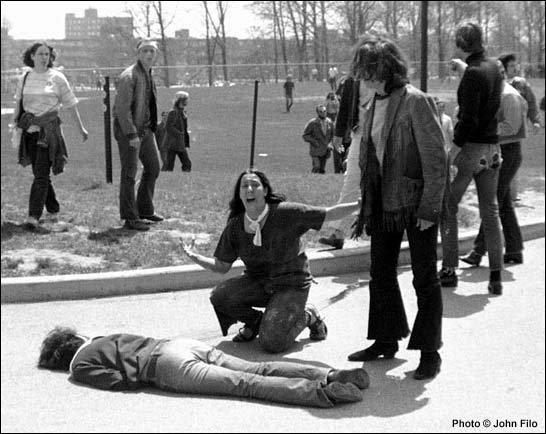

America in the 1960s and 1970s was filled with turmoil and civil unrest as the nation was divided in a way not seen since the Civil War. As one looks at the events of this period, there is no doubt that the political activism of the young people on its college campuses contributed to the social unrest. Civil rights demonstrations and anti-war protests were prevalent on campuses across the nation. Oftentimes violence followed these demonstrations and no other event captures this aspect of student life in those days more vividly than that of the tragic shooting that took place in a small university town in Kent, Ohio in May of 1970.
In a earlier post you viewed a video of this action by clicking on 1970 Kent State Ohio Shootings. Now you can read the rest of the story in an article revisiting those times by Steve Farrrell at "Peace Loving" Protesters: Kent State Revisited.



